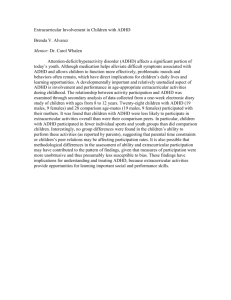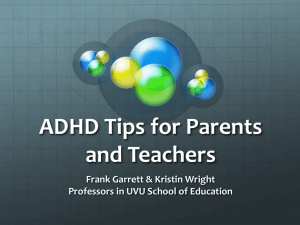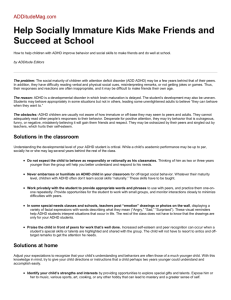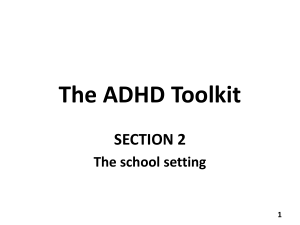Improving Classroom Behavior: Help ADHD Children to Stop Fidgeting
advertisement
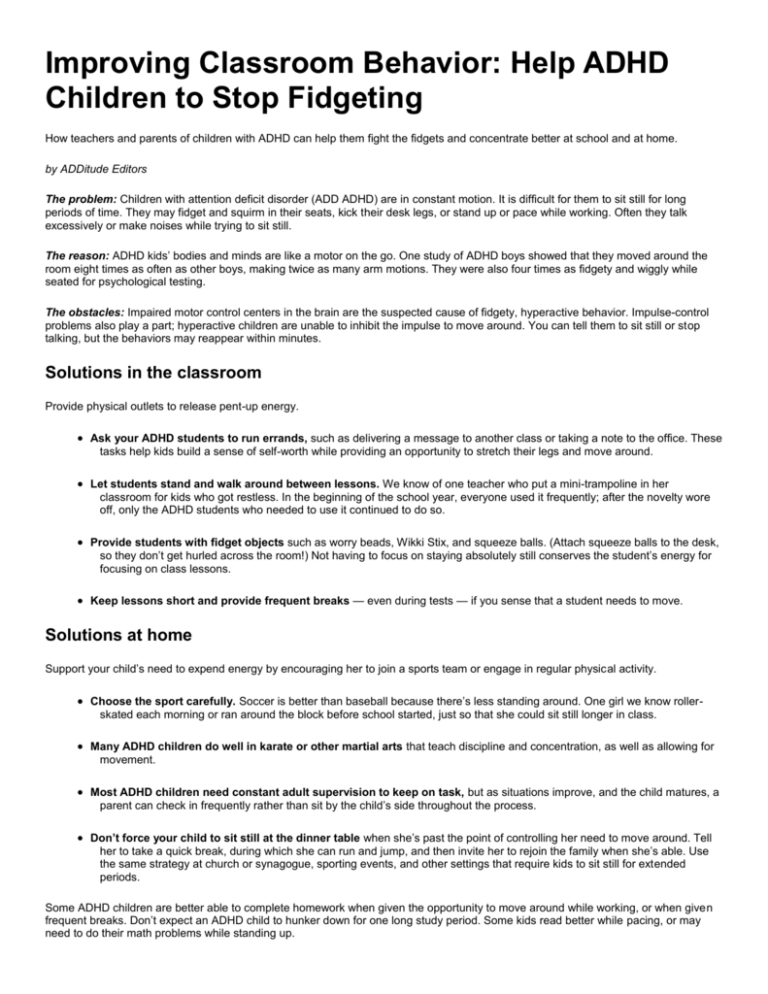
Improving Classroom Behavior: Help ADHD Children to Stop Fidgeting How teachers and parents of children with ADHD can help them fight the fidgets and concentrate better at school and at home. by ADDitude Editors The problem: Children with attention deficit disorder (ADD ADHD) are in constant motion. It is difficult for them to sit still for long periods of time. They may fidget and squirm in their seats, kick their desk legs, or stand up or pace while working. Often they talk excessively or make noises while trying to sit still. The reason: ADHD kids’ bodies and minds are like a motor on the go. One study of ADHD boys showed that they moved around the room eight times as often as other boys, making twice as many arm motions. They were also four times as fidgety and wiggly while seated for psychological testing. The obstacles: Impaired motor control centers in the brain are the suspected cause of fidgety, hyperactive behavior. Impulse-control problems also play a part; hyperactive children are unable to inhibit the impulse to move around. You can tell them to sit still or stop talking, but the behaviors may reappear within minutes. Solutions in the classroom Provide physical outlets to release pent-up energy. Ask your ADHD students to run errands, such as delivering a message to another class or taking a note to the office. These tasks help kids build a sense of self-worth while providing an opportunity to stretch their legs and move around. Let students stand and walk around between lessons. We know of one teacher who put a mini-trampoline in her classroom for kids who got restless. In the beginning of the school year, everyone used it frequently; after the novelty wore off, only the ADHD students who needed to use it continued to do so. Provide students with fidget objects such as worry beads, Wikki Stix, and squeeze balls. (Attach squeeze balls to the desk, so they don’t get hurled across the room!) Not having to focus on staying absolutely still conserves the student’s energy for focusing on class lessons. Keep lessons short and provide frequent breaks — even during tests — if you sense that a student needs to move. Solutions at home Support your child’s need to expend energy by encouraging her to join a sports team or engage in regular physical activity. Choose the sport carefully. Soccer is better than baseball because there’s less standing around. One girl we know rollerskated each morning or ran around the block before school started, just so that she could sit still longer in class. Many ADHD children do well in karate or other martial arts that teach discipline and concentration, as well as allowing for movement. Most ADHD children need constant adult supervision to keep on task, but as situations improve, and the child matures, a parent can check in frequently rather than sit by the child’s side throughout the process. Don’t force your child to sit still at the dinner table when she’s past the point of controlling her need to move around. Tell her to take a quick break, during which she can run and jump, and then invite her to rejoin the family when she’s able. Use the same strategy at church or synagogue, sporting events, and other settings that require kids to sit still for extended periods. Some ADHD children are better able to complete homework when given the opportunity to move around while working, or when given frequent breaks. Don’t expect an ADHD child to hunker down for one long study period. Some kids read better while pacing, or may need to do their math problems while standing up.

